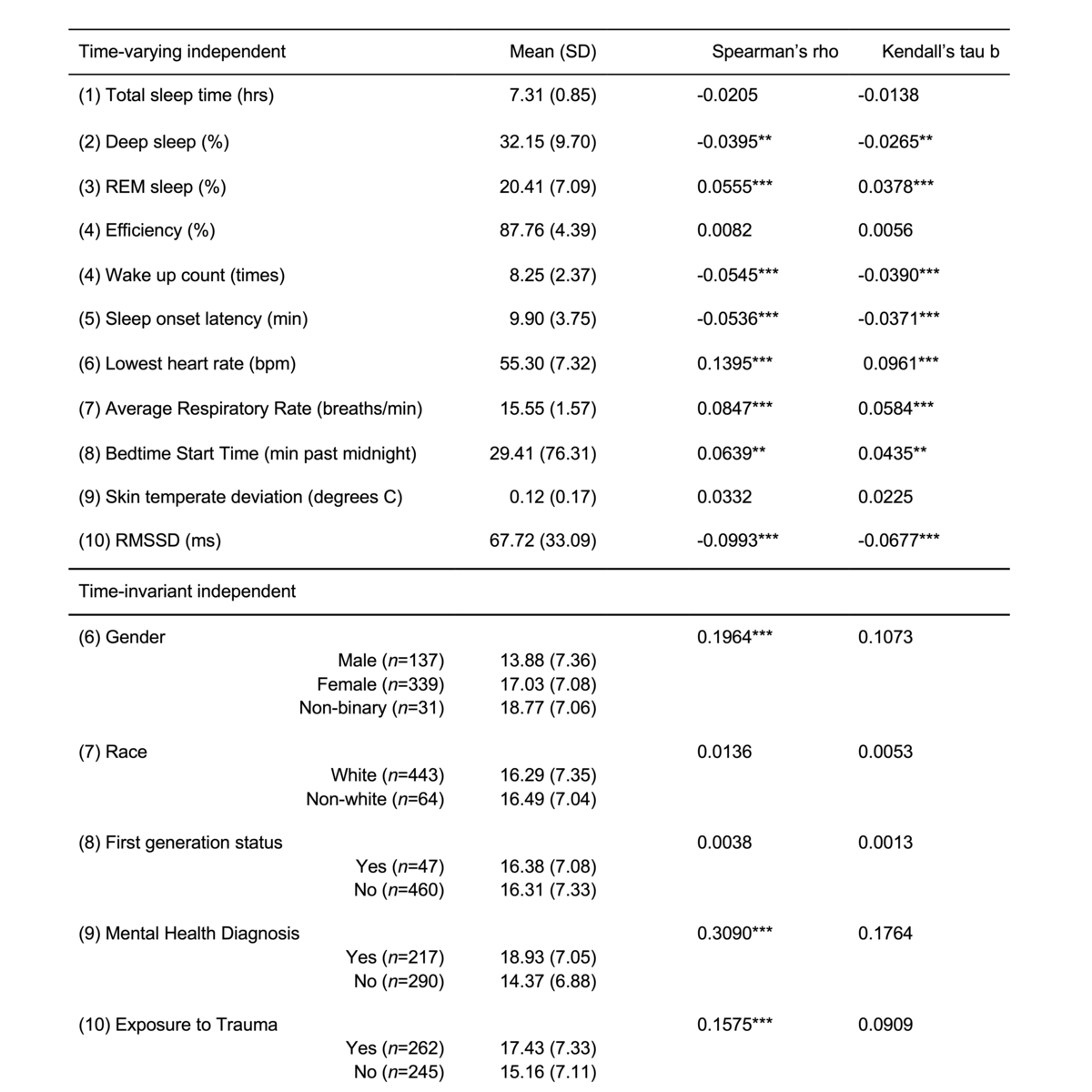Detecting stress in college freshman from wearable sleep data
L. S. P. Bloomfield, M. Fudolig, P. S. Dodds, J. L., J. L. Lovato, J. Kim, E. W. McGinnis, R. S. McGinnis, M. Price, T. H. Ricketts, K. Stanton, and C. M. Danforth

Times cited: 2
Abstract:
Sleep plays an important role in health and functioning, yet little is known about how it is linked to stress in young adults. Consumer wearables have been particularly successful at quantifying sleep and may be useful in identifying changes in mental health. The transition to college has a notable impact on both stress and sleep behaviors. Students from a public university provided continuous biometric data and answered weekly surveys for their first semester of college ($N$=507). Longitudinal models showed that increased average respiratory rate during sleep was associated with higher weekly perceived stress scores, effects that persisted after controlling for gender, race, first-generation status, mental health history, trauma history. Specifically, for every increased breath per minute, the odds of experiencing moderate-to-high stress were 1.25 times higher (a 25\% increase), holding demographic and psychological history variables constant. Notably, relationships with stress were specific to respiratory rate, but were not found with other sleep measures previously linked to stress, such as heart rate variability, total sleep hours, sleep efficiency, sleep onset latency, and wake up count. Consistent with previous work, female gender, a previous mental health diagnosis, and previous exposure to multiple traumas were significantly associated with self-reported stress. These findings point to respiratory rate as a potentially important factor to measure due to its robust association with stress among college students. Wearable data may help us identify, understand, and to better predict stress, a strong signal of the ongoing mental health epidemic among college students.
- This is the default HTML.
- You can replace it with your own.
- Include your own code without the HTML, Head, or Body tags.